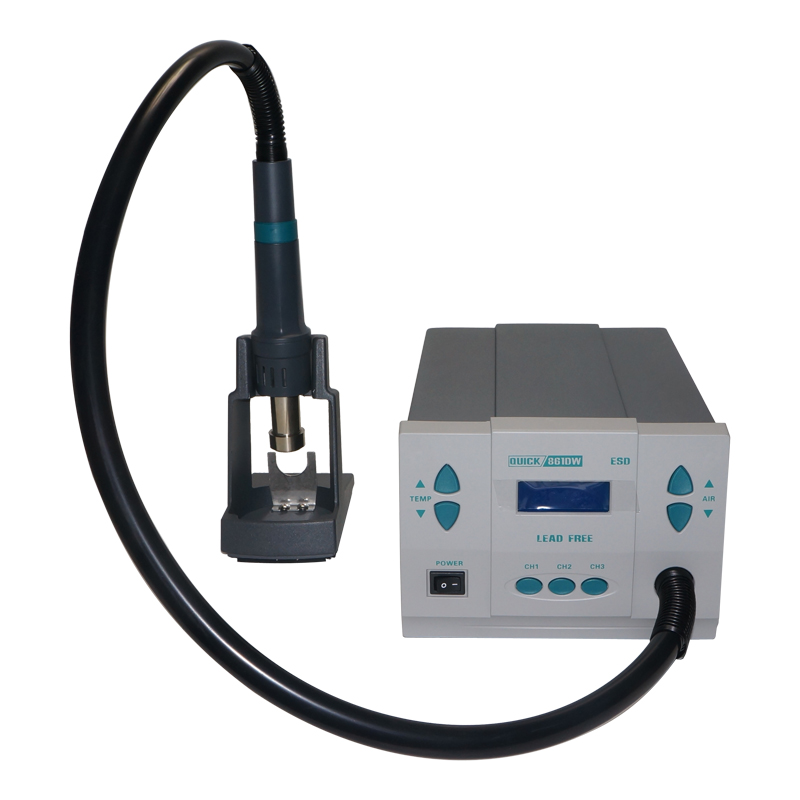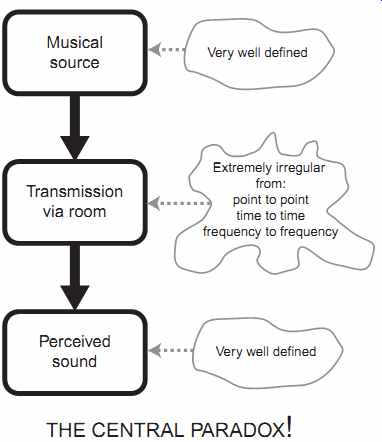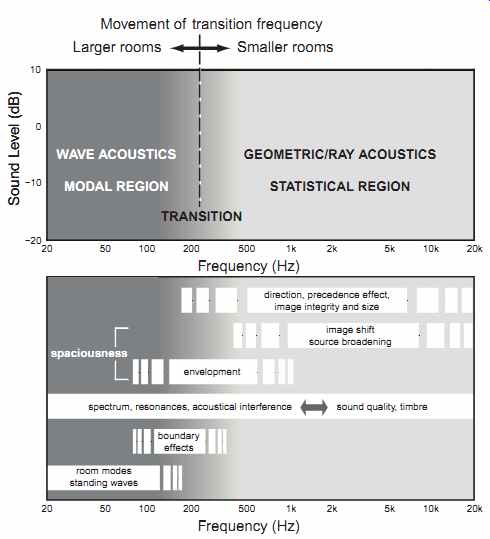
Above: AD----110V-1000W Hot-Air BGA Rework Soldering Station Motherboard-Repair-Station (click image for more details)
The next several sections examine how sound propagates from a source to a listener in a reflective space and how those sounds are perceived when they arrive at the ears. We will find that technical measurements of the propagation path show enormous "flaws" that, over the years, made people believe that reflected sound is an "error" in need of immediate and expensive elimination. As discussed earlier, the development of porous absorbers in the 1930s led to a popular belief that acoustical room treatment begins with a large stack of fiberglass. In the author's opinion this approach has some value and should be applied to the interior of many popular restaurants within which conversation is all but impossible, especially for those with deteriorating hearing. However, for normal living and listening spaces, time has shown that a certain amount of reflected sound is not only welcome but expected.
In performance spaces, reflections are essential. Arthur Benade (1984) had a wonderful clarity of insight into sound in rooms, some of which is embodied in FIG. 1, which is a clear statement that no linear relationship exists between what we measure in a room and what may be perceived in that room.
As the story develops, it will be evident that measurements are indeed relevant, but some measurements are much more useful than others. It will also become clear that humans are wonderfully adaptable: We can usually compensate for things we can measure and for things we can hear while we are moving or while they are changing but fade away once stability is established. It is almost as if when we walk into a room, we hear all the reflections, and this gives us a great deal of information about the acoustical nature of the space. Then, when we sit down, within a very short time the perceptual effects of the reflections are attenuated, some more than others, and we settle in to listen to the sound sources, whatever they may be.
Other perceptual effects are enhanced by room acoustics, and nowhere is this more apparent than in a good concert hall. The same sound source-a voice or musical instrument, for example-will take on some of the character of different rooms, and yet they can still be recognized as being the "same" sound sources. Within some range of "normal" rooms, we seem to have a built-in ability to "listen through" a room to attend to even minute details of the sound source. It is an interesting tale.
Reflections have many effects on the perception of sound in rooms; some are interactive with each other, and others are relatively independent. Before we get into an examination of experimental evidence of acoustical events in small rooms, it is advantageous to have a perspective on the factors involved with our perceptions of direction and space. To that end, let us very brie? y summarize the dominant effects of sounds above the bass-frequency range:

FIG. 1 "The central paradox" of sound in rooms.

FIG. 2 The approximate frequency ranges over which various audible
effects of reflected sound may be heard. These will be discussed in the
introductions to the relevant sections that follow.
¦ Localization has two principal dimensions:
_ Direction: Identifying the direction from which sound appears to be coming. Because of the ear locations, we are much better at localizing in azimuth than we are in elevation, and we are more precise close to the median plane (a vertical forward/back plane running through the head) than we are to the sides. In rooms, the precedence effect allows us to localize in the presence of numerous reflections. It is a cognitive effect, occurring at a high level in the brain, meaning that it can be different at different times and places, and for different sounds. It changes as we gain experience listening within a space.
_ Distance: Reflections help us to determine distance. Distance perception also has a cognitive component, meaning that we can learn to recognize aspects of the sound field. Question: If we learn to recognize the distance of the real loudspeakers, does this inhibit perceptions of artificial distance in recordings?
¦ Spaciousness or spatial impression can be separated into two components:
_ Image size and position: Strong reflections have the ability to shift the apparent position of a source in the direction of the reflection and/or to make the source appear larger. In live classical performances, this is called ASW (apparent source width), and audiences like it. In sound reproduction, there is evidence that the tendency continues.
_ Envelopment and the sense of space: Also called listener envelopment (LEV), this is the impression of being in a specific acoustical space. It is perhaps the single most important perceived element distinguishing truly good concert halls. In music recordings and movies, it is arguably the greatest improvement contributed by multichannel audio.
¦ Timbre changes have two basic components; one can be negative, and the other is mostly positive. Simply detecting a "difference" is not a sufficient criterion.
_ Comb filtering, repetition pitch: Colorations can be created when a sound is added to a delayed version of itself. When the result is measured, we see a repeating pattern of peaks and dips in the frequency response, which is why it is called "comb" filtering. In some circumstances a pitch can be perceived that is associated with a frequency defined by the inverse of the delay.
The effect is audibly obvious if it occurs in an electronic signal path or if there is a single, strong vertical (median plane) reflection in an otherwise echo-free environment. However, for reflections that arrive from large horizontal angles and in normally reflective spaces where there are multiple reflections, the effect ceases to be a problem.
_ The audibility of resonances: Resonances are the "building blocks" of voices and musical instrument sounds. Reflective spaces enhance our ability to hear resonances, making these sounds timbrally richer and more interesting. In loudspeakers, resonances are huge problems because they monotonously color all reproduced sounds. Listening in reflective rooms is more likely to reveal inferior loudspeakers.
¦ Speech intelligibility is important because if the perception of speech is poor, our ability to be informed and entertained has been seriously compromised. Fortunately, the human hearing system is not just remarkably tolerant of reflections typical of small rooms. In fact, almost without exception, we make use of them to assist us in understanding speech.
Our understanding of these perceptual factors is not yet complete, but there is a lot of information in the accumulated literature of architectural acoustics.
Complicating the situation is the fact that several of these effects can coexist, interacting with each other, and that the relationships can be different, at least in some degree, for different kinds of sounds. A lot of the pioneering work was done using speech at the test signal and, although it is fundamentally important, it is not the only sound we listen to. Similarly, many experiments examined the effects of a single reflection auditioned in an otherwise reflection-free environment. It will be found that some conclusions need to be modified for normally reflective spaces. When looking at the results of data gathered in "scientific" circumstances, it is essential to think carefully before drawing conclusions about what may or may not be important in real-world situations.
We know that in real rooms there are multiple reflections. However, to understand the influence of many, it is useful to begin by understanding the influence of a few, or even one. It also makes experiments practical and controllable. As will be seen, there is a logical progression of effects from a single to multiple reflections, giving us, in the end, a better insight into the perceptual mechanisms at play.
All of the effects being discussed have portions of the frequency range over which they are most noticeable. FIG. 2 includes a repetition of this Figure, which illustrates that, in terms of physical acoustics, the frequency range is divided into two regions connected by a broad transition zone. Under it is an attempt to show the frequency ranges over which various audible effects of reflections are most likely to be heard. As we will see, these are very approximate divisions, subject to variations with different program material, reproduced in different environments, and so on. They will be shown at the beginning of each relevant section and will be discussed at that point.